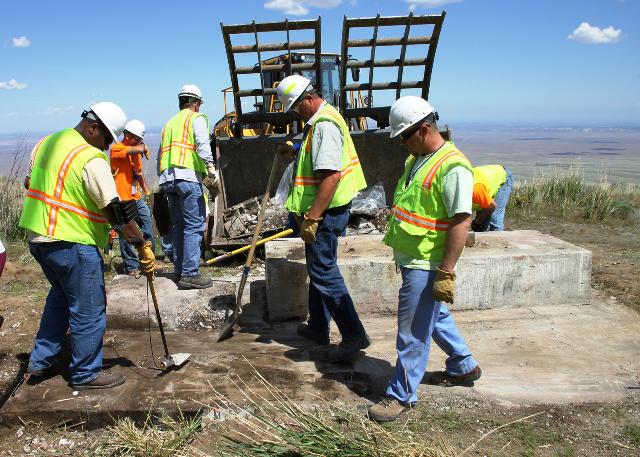
Starting Monday, the Energy Department’s Hanford Site in Washington state will enter Phase 2 of remobilization toward full-scale operations following the March drawdown forced by the COVID-19 pandemic.
Hanford Site Manager Brian Vance announced the change in a Thursday message to the 11,000 federal and contract workers at the former plutonium production complex.
Phase 2 is the third step in DOE’s four-stage process in ramping up on-site work at nuclear cleanup sites and elsewhere to pre-COVID-19 pandemic levels. Phase 0 is preplanning. Phase 1 begins the recall of personnel in important roles and low-risk jobs that can be done on-site with little protective equipment. Phase 2 builds upon Phase 1 and can “include field work that may require larger work teams and more extensive PPE use,” Vance said in the memo.
The memo does not cite the current on-site headcount, or to what level it might increase during Phase 2. But an agency spokesperson said 50% of Hanford personnel are currently working on-site, 45% are teleworking, and another 5% are collecting paid leave through the Coronavirus Aid, Relief, and Economic Security (CARES) Act.
Ultimately, the 16 properties overseen by the Office of Environmental Management will reach Phase 3, with on-site staffing and workloads nearly approximating pre-pandemic levels. Even then, however, some employees in high-risk health categories will likely still be allowed to telecommute, the Energy Department has said.
Other DOE cleanup sites currently in Phase 2 are Idaho National Laboratory, the Nevada National Security Site, the Paducah Site in Kentucky, Portsmouth Site in Ohio, Waste Isolation Pilot Plant in New Mexico, West Valley Demonstration Project in New York, and the Brookhaven National Laboratory in New York. Other sites are in Phase 1 and none has entered Phase 3.
The Uranium Mill Tailings Remedial Action Project (UMTRA) in Moab, Utah, is a unique case in that it never scaled back operations because so many of its workers are heavy equipment operators who are, by the nature of the work, already isolated.
Hanford employees returning from either working remotely or paid leave will find an altered work environment where faces coverings are required, physical distancing is increased, and face-to-face contact is reduced. “[W]e will continue to carefully manage our on-site population each week, as appropriate,” Vance said.
Like most other Cold War and Manhattan Project remediation properties, Hanford dramatically scaled back its operations March 24 in order to slow the spread of the novel coronavirus 2019. It entered Phase 1 on May 26.
This week, Hanford confirmed that two more workers had tested positive for COVID-19. There have been at least 77 Hanford workers infected with the virus so far, based on an informal count.
There are currently 149 active COVID cases in the EM complex, another DOE official said Thursday. That is flat from the week before. The Office of Environmental Management is not releasing figures for total cases during the course of the pandemic.
The Savannah River Site in South Carolina, which houses operations for both DOE nuclear cleanup and the semiautonomous National Nuclear Security Administration, reported Friday a total of 438 cases of COVID-19 among its workforce – up 32 from the prior week. But 354 of the infected employees have recovered and been cleared to return to work.